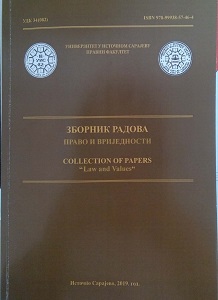Врсте овлашћења Европске уније
Types of Powers of the European Union
Author(s): Zoran Radivojević
Subject(s): EU-Legislation
Published by: Правни факултет Универзитета у Источном Сарајеву
Keywords: European Union; Lisbon Treaty; Principle of conferral; Exclusive powers; Non-exclusive powrs; Shared powers; Complementary powers; Coordination powers; Common foreign and security policy;
Summary/Abstract: The founding treaties of the European Communities, and later of the European Union, did not attempt to establish any special classification of their powers. Nevertheless, as early as the 1970s, the EC institutions, primarily the Court of Justice, began to make a distinction between exclusive and competing powers. Since the adoption of the Single European Act, founding treaties started envisaging powers which could not be classified in either of the two categories. In the meantime, the number of these types of powers increased with the establishment of the European Union by the Treaty of Maastricht and the subsequent amendments to the founding treaties made in Amsterdam and Nice.The founding fathers of the Lisbon Treaty relied on the achievements of previous EU practice. An analysis of the relevant articles of this treaty, and above all the Treaty on the Functioning of the European Union, points to two basic categories of powers: exclusive and non-exclusive powers. Non-exclusive powers include shared and complementary powers. The latter includes EU’s powers to support, coordinate and supplement Member State activities, as well as the coordination powers that the EU enjoys in the area of economic policy, employment and social policy, regardless of the fact that they are specified in different articles. As a result of the earlier pillar structure, in the Lisbon Treaty, the powers in the area of common foreign and security policy are set out as a separate category.
- Page Range: 31-46
- Page Count: 16
- Publication Year: 2019
- Language: Serbian
- Content File-PDF

